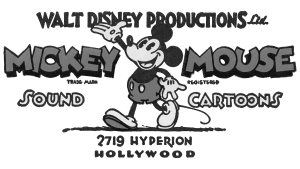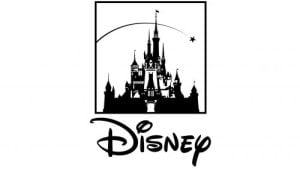
The Walt Disney Company is a global entertainment hub that has captivated audiences of all ages for nearly a century. This California-based film production company started as a small animation studio in 1923. It has since grown into a powerhouse of creativity. The long list of its creativity includes producing films, television shows, theme parks, and merchandise that have become an integral part of popular culture.
At the heart of this iconic brand is the Walt Disney logo. It is a symbol that has evolved over the years and reflects the company’s rich history and its pursuit of innovation and excellence. The article traces the history and evolution of the Walt Disney logo over the years, among other details of the company.
The Genesis of the Walt Disney Logo (1929 – 1937)
In 1923, brothers Walt and Roy Oliver Disney founded the Disney Brothers Studio. In doing so, they laid the foundation of a legendary entertainment company. It was during this early period that the company brought out one of the most recognisable characters in the world, Mickey Mouse. The character made its debut in the groundbreaking animated short film “Steamboat Willie.”. The success of the film and the character soon made Mickey Mouse the face of the Disney brand.
The original Disney logo featured a profile of Mickey Mouse, with its now iconic circular ears and cheerful expression. In fact, the logo was created by Walt Disney himself and had the image of a walking Mickey Mouse. The emblem had the word “WALT DISNEY PRODUCTIONS Ltd.” at the top and “MICKEY” and “MOUSE” adorning the left and right sides, respectively. The other inscriptions included “TRADE MARK,” “REGISTERED,” “SOUND CARTOONS,” and “2719 HYPERION HOLLYWOOD.”
This simple yet charming design perfectly captured the whimsical spirit of the early animations of the studio and helped establish a strong connection with audiences worldwide.

(1937 – 1948)
The logo iteration of this period had the word “WALT DISNEY” written in both uppercase and lowercase letters. The letters “W” and “D” in uppercase and “i” and “y” in lowercase represented the ears and tails of the character Mickey Mouse.

(1939 – 1983)
The 1939 logo iteration featured a hand drawn illustration of the Mickey Mouse in an upright position with an orange outline. Beneath it was written “WALT DISNEY PRODUCTIONS” in bold, uppercase, and in a sans-serif typeface.

(1940 – 1986)
This logo iteration saw the image of Mickey Mouse with a paint brush in hand looking upwards. Using a red paint jar kept by the side, it is shown painting the wordmarks “WALT DISNEY” and “PRODUCTIONS” in two levels, in red and black, respectively. The logo elements are enclosed within a solid inverted triangle in orange with rounded corners.

(1948 – 1979)
The revamped logo of this era looked handwritten but did not have the letters in italics.

(1972 – 1983)
The logo iteration of this era coincided with the launch of a studio. It was similar to the logo of 1937, with only the word “Productions” placed at the bottom.

(1983 – 1985)
The 1983 logo iteration saw the wordmark “Walt Disney” remain unchanged, while the word “Productions” in the next level changed to “Pictures.” The letters of the word were made larger using a serif typeface.

(1985 – 2006)
As the Disney studio grew in both size and ambition, the logo underwent its first major transformation. It was inspired by the majestic Bavarian castle Neuschwanstein and featured a stylized castle design. It reflected the taste of the Walt Disney logo designer of the time. This change marked a significant shift in the company’s brand identity. The design moved away from the more playful Mickey Mouse motif to a more regal and sophisticated image. The castle became a symbol of the enchanting worlds that Disney created. It captured the imagination of audiences and invited them to experience the magic of its stories.

(2006 – 2011)
In 2006, the Walt Disney logo underwent another evolution that reflected the technological advancements in animation the company was making at the time. The new logo featured a magical castle with the text “Walt Disney Pictures” prominently displayed beneath it. The logo showed a falling star to symbolise the fairy-tale wishes of the film studio.
This updated design was a testament to Disney’s commitment to pushing the boundaries of storytelling and embracing new technologies. The castle remained the central element. However, its sleeker and more modern appearance signalled the company’s willingness to adapt and stay relevant in a rapidly changing entertainment landscape.

(2011 – Present)
In 2006, Disney unveiled its current logo, which has become an instantly recognisable symbol across the globe. This version features a highly detailed depiction of Cinderella’s castle, with all its iconic spires and turrets. Also, while maintaining the classic elements of the shooting star and the square border, the new logo exudes a sense of grandeur. It captures the company’s focus on creating unforgettable experiences. The intricate details of the castle serve as a reminder of Disney’s attention to craftsmanship. It also reminds Disney’s ability to transport audiences to the realms of fantasy and wonder.

The Elements of the Walt Disney Logo
Font
The wordmark used in the Walt Disney logo uses the signature of the founder of the company.
Colour
The entire imagery of the Walt Disney logo comprising the castle, the waterbody, lights, and the wordmark is rendered using a wide colour palette of bright colours. The use of such colours creates an illusion of magic and power.
The History of Walt Disney
Walt Disney and his brother Roy Disney established the “Disney Brothers Studio” to venture into the animation industry. Their breakthrough came with the release of the short animation film “Steamboat Willie” in 1928. The film introduced the beloved character of Mickey Mouse to audiences worldwide. And after the remarkable success of Walt Disney in the 1940s, the company diversified into producing various films, theme parks, and television ventures. Although the company faced a temporary decline in profits after the demise of Walt Disney in 1966, it came back strongly.
In 2005, under the leadership of CEO Bob Iger, Disney embarked on a period of expansion and acquisition. This resulted in the creation of numerous new intellectual properties. Today, Disney boasts an expansive portfolio that ranges from 20th-century Century Animation to Marvel Studios and Pixar. The company has become one of the most renowned and largest conglomerates globally. It has a proud collection of over 135 Academy Awards.
Interesting Facts About Walt Disney
- Walt Disney holds the all-time record for the most wins (22) and nominations (59) for the Academy Awards by any individual. He also received two Golden Globe Special Achievement Awards and an Emmy Award.
- Disney, along with animator Ub Iwerks, created Mickey Mouse in 1928. Walt also provided Mickey’s original voice, which made the character his personal alter ego and one of the most recognizable symbols in the world.
- He pioneered the use of synchronized sound in animation with Steamboat Willie (Mickey Mouse’s debut in 1928). Disney also introduced Technicolor to animation with the “Silly Symphonies” shorts and won his first Oscar for Flowers and Trees (1932).
- Snow White and the Seven Dwarfs (1937) was the first full-length animated musical feature film. It was produced at great financial risk during the Great Depression. Its success revolutionized the film industry and proved animation could be art and blockbuster entertainment.
- The latest Snow White and the Seven Dwarfs as a live-action musical was released on March 21, 2025. However, contrary to the expectations of the studio, it proved to be a dud at the box office.
- Disney founded Disneyland in Anaheim, California, which opened in 1955 as the first amusement park of its kind. He also started the development of Walt Disney World in Florida, thereby creating the blueprint for modern theme parks around the globe.
- Later in life, Walt focused on planning EPCOT—the Experimental Prototype Community of Tomorrow. It was envisioned as a utopian city driven by technological innovation and creativity.
- Before Mickey Mouse, Disney created Oswald the Lucky Rabbit. He lost the rights to Oswald (and most of his animation team) because of a contract dispute. This setback inspired him to develop Mickey Mouse on his train ride home.
- Walt Disney was deeply interested in drawing, taking early art classes, and landing his first job as a commercial illustrator at age 18. He married Lillian Bounds, who was one of his first studio employees, in 1925, and they had two daughters, Diane and Sharon.
- Walt Disney had a special talent for humanizing animals in his cartoons. In doing so, he was influenced by a childhood incident and his enduring empathy toward creatures. This trait shaped the storytelling style of the Disney brand.
- Walt Disney was instrumental in founding the California Institute of the Arts (CalArts), which combined all the creative arts under one roof. This reflected the commitment of Walt Disney to foster future generations of artists.
- Walt Disney was born on December 5, 1901, in a house designed and built by his parents in Chicago, Illinois. The house still stands today and has been restored to how it appeared in his childhood.
Finally
The Walt Disney logo has undergone a remarkable evolution over the years, which reflects the company’s growth, innovation, and dedication to storytelling. From the early days of Mickey Mouse to the present-day design of a castle, the iconic symbol has played a crucial role in the unparalleled success of Disney. In fact, more than just a visual representation, the Disney logo has become the most recognisable element of the brand. The logo serves as a constant reminder of the company’s unwavering focus on creating magical experiences that resonate with consumer emotions everywhere in the world.